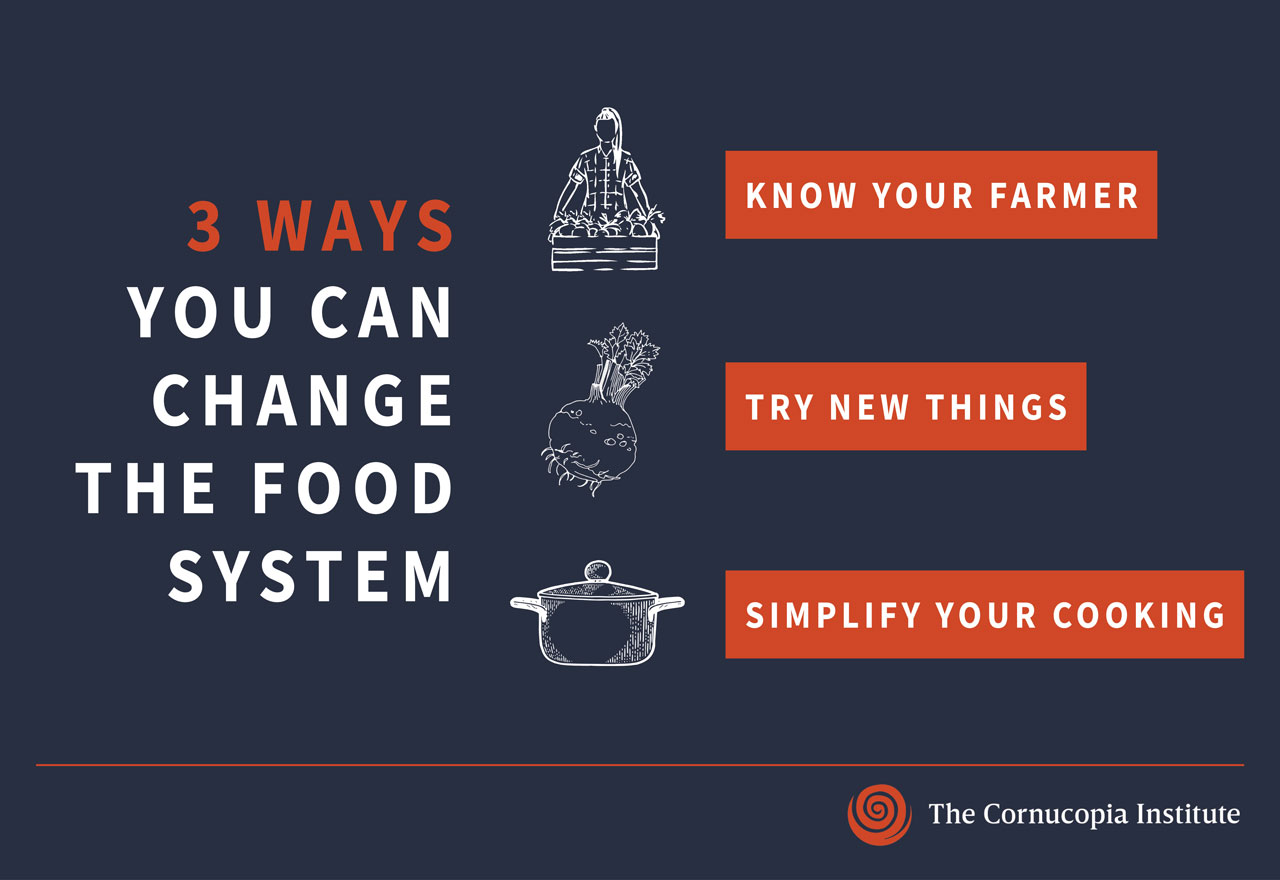Step #1: Know Your Farmer
Your food has a story to tell — your food’s packaging has a story to sell. Shoppers who look beyond marketing gimmicks to seek out the whole story behind their food can meaningfully impact their food system.
Chipping away at Big Ag starts by investing in operations that are growing and producing authentic organic food. Whether your local farmer is down the road or hours away, take one of the following steps to bridge the distance:
Join a CSA: Investing in Community Supported Agriculture (CSA) puts resources directly into the weathered hands of your farmer and expands what you eat (more on that in Step #2 below). Consider a winter CSA share, giving your local organic farmer an income in a season when crops aren’t as abundant. (Search the databases at LocalHarvest or FairShare to find a CSA near you.)
Join a co-op: Co-ops are values-based businesses that ensure even the smallest farms a spot on store shelves.
Shop at the farmers market: Keep dollars in the community by shopping at a local market. (Your sister doesn’t need another scarf, but she’ll love some organic toffee from her favorite certified organic farmer.)
Make your purchases count this holiday season by sustaining local organic farmers.
Consider it a gift to yourself, your family, and your community’s well-being.
Step #2: Try New Things
Embrace the vegetable you haven’t yet met. When you are willing to try new foods, you support farmers who need income after the last harvest of tomatoes and peppers. Your dollars support authentic organic crops that are bred for flavor and nutrition, not for a climate controlled trip on a tractor trailer.
Like this? Try that: A varied diet is a vote for biodiversity. Swap in nutty sunchokes for potatoes and earthy celeriac for celery. Choose the otherworldly Romanesco variety when shopping for broccoli.
Ask a farmer: Learn what was recently picked or pulled from the ground, what’s nearly done for the season, and the exciting varieties of seeds heralding spring. Think like a farmer and you’ll soon be eating one like too.
Buy bitter: Fear not the winter greens. Their sharp flavor is nature’s way of showing off their nutrient density. They’re also a welcome counterbalance to rich holiday meals.
Step #3: Simplify Your Cooking
The incomparable flavors of fresh, organic food lend themselves to simple cooking. And it’s the quality of the food that the people seated around your table will remember the most, not how many hours you spent prepping in the kitchen.
Follow these tips for stress-free meal prep with the best organic ingredients:
Prepare your building blocks Carve out time to simmer beans in the crockpot or lentils on the stove. Roast a chicken or bake tofu. Stocking your fridge with foundational ingredients saves time. And when you’re hungry and need a quick fix, it’ll motivate you to cook instead of calling for a pizza. (Or, order that pie and top it with sautéed greens.)
No recipes required Organic foods turn basic dishes into remarkable meals. Pair cooked beans with sweet roasted squash for tacos or burritos. Top the chicken or tofu with roasted apples. Simmer the lentils with broth and roasted rainbow carrots for a beautiful, delicious soup.
What’s on hand? Trust your creativity and build confidence in the kitchen by using every scrap, leaf, and leftover. (Turn it into a challenge, and delegate dinner to the kids.) A little ingenuity keeps your food out of the compost bin and landfill and cultivates deep appreciation for what the farmer contributed to your meal.
Are you getting our eNews? Sign up for more stories like this, plus updates on tools, research, and investigations that drive change.


